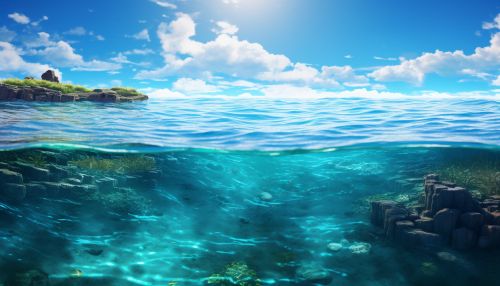The Dynamics of Ocean Biogeochemical Cycles and Global Change
Introduction
Ocean biogeochemical cycles are complex systems of chemical, biological, and physical interactions that regulate the distribution and flow of nutrients and other elements in the ocean. These cycles play a critical role in the Earth's climate system, influencing atmospheric composition, ocean productivity, and global carbon cycling. The dynamics of these cycles are influenced by a variety of factors, including changes in ocean circulation, biological productivity, and anthropogenic inputs. Understanding these dynamics is critical for predicting how the ocean's biogeochemical cycles may respond to global change.
Ocean Biogeochemical Cycles
Ocean biogeochemical cycles involve the transformation and transport of chemical substances in the ocean. These substances, known as biogeochemical elements, include carbon, nitrogen, phosphorus, and many others. The cycling of these elements involves a complex interplay of physical, chemical, and biological processes that occur on a range of spatial and temporal scales.
Carbon Cycle
The oceanic carbon cycle is a key component of the global carbon cycle. It involves the uptake of carbon dioxide (CO2) from the atmosphere by the ocean, its conversion into organic matter by photosynthetic organisms, and its return to the atmosphere through respiration and decomposition. The oceanic carbon cycle also includes the formation and dissolution of calcium carbonate (CaCO3) by marine organisms, which contributes to the ocean's role as a sink for atmospheric CO2.
Nitrogen Cycle
The nitrogen cycle in the ocean involves the transformation of nitrogen in various forms, including nitrate (NO3-), nitrite (NO2-), ammonia (NH3), and nitrogen gas (N2). These transformations are carried out by a diverse array of microorganisms through processes such as nitrification, denitrification, and nitrogen fixation.
Phosphorus Cycle
The phosphorus cycle in the ocean involves the cycling of phosphorus in various forms, including phosphate (PO43-), organic phosphorus, and particulate phosphorus. Phosphorus is an essential nutrient for marine organisms and plays a key role in biological productivity in the ocean.


Dynamics of Ocean Biogeochemical Cycles
The dynamics of ocean biogeochemical cycles are influenced by a variety of factors, including changes in ocean circulation, biological productivity, and anthropogenic inputs.
Ocean Circulation
Ocean circulation plays a critical role in the distribution and transport of biogeochemical elements in the ocean. Changes in ocean circulation patterns can influence the availability of nutrients in the surface ocean, affecting biological productivity and the uptake of CO2 from the atmosphere.
Biological Productivity
Biological productivity in the ocean is a key driver of biogeochemical cycling. The growth and decay of marine organisms influence the cycling of carbon, nitrogen, and phosphorus in the ocean. Changes in biological productivity can affect the ocean's role as a sink or source of atmospheric CO2.
Anthropogenic Inputs
Human activities, or anthropogenic inputs, can significantly alter the dynamics of ocean biogeochemical cycles. These inputs include the emission of CO2 and other greenhouse gases, nutrient pollution from agricultural runoff, and the release of toxic substances into the ocean.
Ocean Biogeochemical Cycles and Global Change
Global change, including climate change and other anthropogenic impacts, is expected to have significant effects on the dynamics of ocean biogeochemical cycles.
Climate Change
Climate change can influence ocean biogeochemical cycles in several ways. Changes in temperature, salinity, and ocean circulation can affect the distribution and cycling of biogeochemical elements in the ocean. Increased CO2 concentrations in the atmosphere can lead to ocean acidification, which can affect the formation and dissolution of CaCO3 and the ocean's capacity to absorb CO2.
Anthropogenic Impacts
In addition to climate change, other anthropogenic impacts, such as nutrient pollution and the release of toxic substances, can alter the dynamics of ocean biogeochemical cycles. These impacts can lead to changes in biological productivity, shifts in microbial community composition, and alterations in the cycling of biogeochemical elements in the ocean.
Conclusion
Understanding the dynamics of ocean biogeochemical cycles is critical for predicting how these cycles may respond to global change. This knowledge can inform strategies for mitigating the impacts of climate change and other anthropogenic impacts on the ocean and the Earth's climate system.
